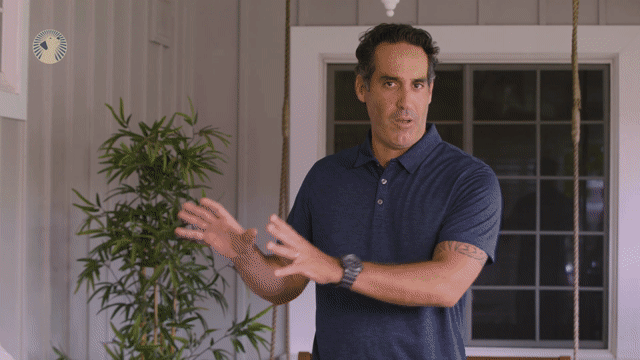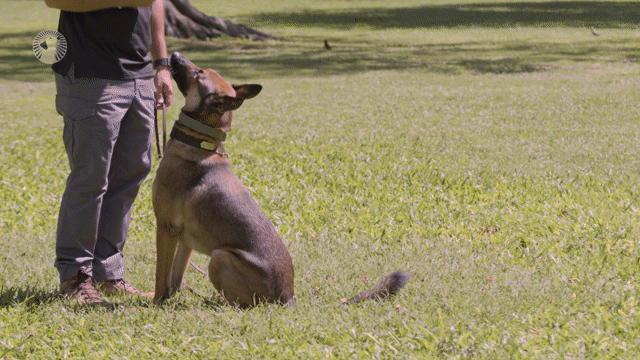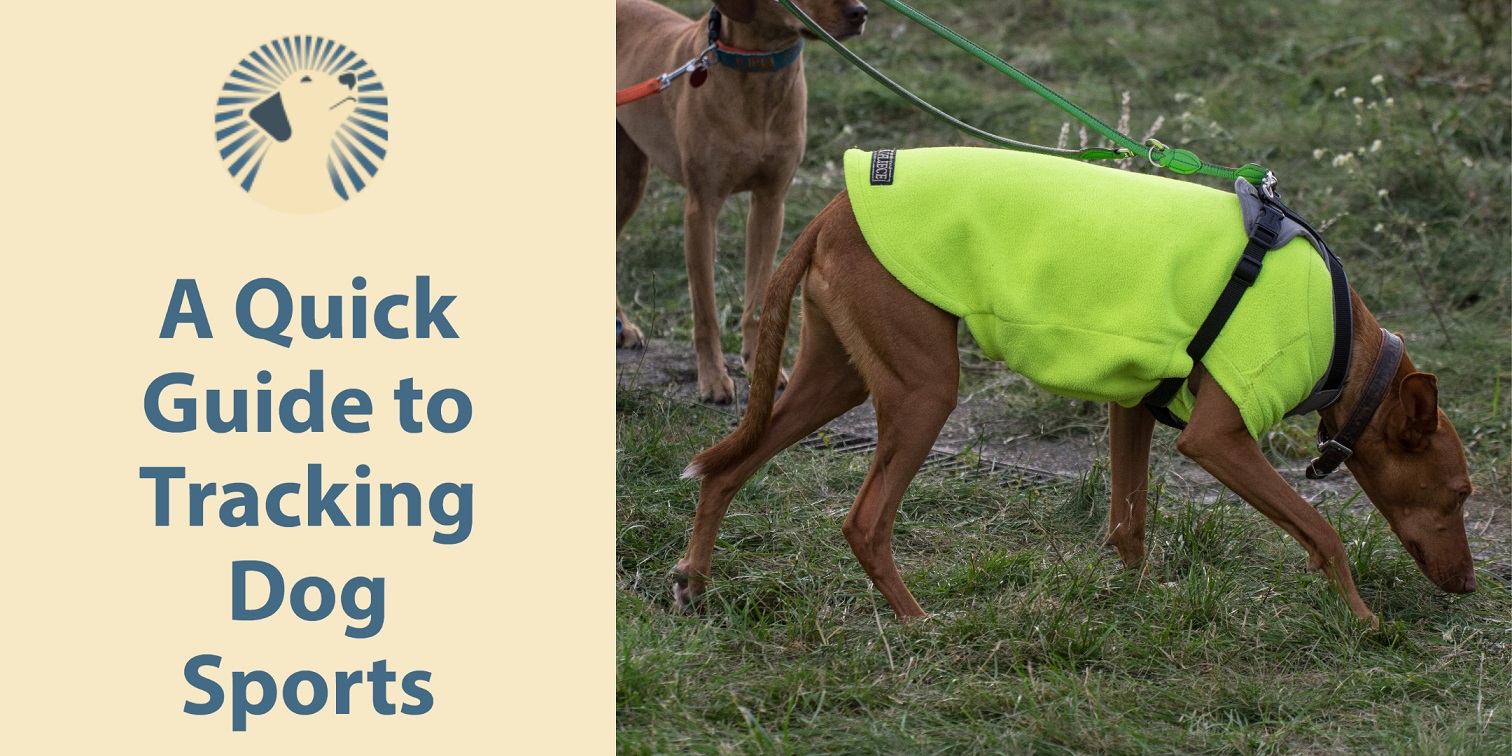
How Dogs Use Their Senses in Training
When training a dog, you need to be aware of and use their senses in order for the process to go as smoothly as possible. The best way this can happen is through sense-training exercises that will allow your pup to learn new commands while also stimulating their natural instincts.
How Can Using a Dog's Senses Help in Training?
Just like with humans, learning a new skill can be easier if the learning is gamified. This won't work for all dogs, but if you take the time to understand how your dog processes information and what types of things would appeal to them, it will be easier to craft a training course that you'll both enjoy. Come up with a list of different activities or items, perhaps even find examples online (there are lots of ideas available), and figure out which ones stand out to your dog.
What is Your Dog's Favorite Sense?
There are five specific senses that dogs use when processing information. These are touch, taste, smell, sight, and sound. Each dog will have their preferences for these—just like people do. Start by figuring out which one of these your dog likes the most, then incorporate that into your training regimen whenever possible.
For example, some dogs are motivated in training by toys, while others are motivated by food. If you know your dog has the strongest sense of smell, you could start by using a favorite treat or toy to try and get them interested in learning. Once they are engaged, you can slowly take away the item until they fully focus on your voice.
What About Dogs With Weak Senses?
Just like with humans, some dogs have stronger senses than others. If you find that your dog doesn't respond well to certain types of motivation (like toys or food), then think about what alternatives might work for them. For example, some dogs respond well to praise, petting, or other types of interactions.
While there are many things that can affect your training, it's important not to get too stressed out about which method is the best; instead, use whichever one works for you and your pooch. The more variety you have in how you train them, the easier it will be to keep their attention throughout the learning process (and any time after that). If you ever notice that they aren't responding as well, try changing up what type of reinforcement they're getting until they perk up again.
Dog Training Exercises Using Their Senses
Sense: Smell
What Information do Dogs Get From Sniffing?
A dog's sense of smell can identify gender, mood, aggression levels, and so much more! They use their sense of smell to tell if something is good for them or not. Because your dog's sense of smell is their most highly-developed sense, and it can be used to teach your pup basic cues such as sit and stay. The most effective way to use your pup's nose is by using food.
Scent Training Games
- Nosework - This type of training helps your dog to use their sense of smell and can be used to teach them a wide variety of tasks like finding specific scents, tracking down lost people, or searching for items.
- Guided Scent Work - This type of training helps you to direct your dog when they are looking for a specific scent with the help of a long line. It is best used when training dogs in urban areas or in situations where there may be traffic or other distractions.
- Scent Detection - Scents that you would recognize such as narcotics and human remains can be detected using this type of training. They aren't generally used on living humans (except for newly discovered ways to detect cancer and other diseases) but instead can check luggage and parcels at airports, detect bed bugs, and search buildings after an earthquake for survivors.
- Tracker - When you are searching for a specific person or animal, you can benefit from your dog's ability to track. They have an amazing sense of smell and will be able to follow the trail without any problem.
- Passive Alert - This type of training works best when you are looking for drugs, explosives, or other illegal substances. Some dogs are trained in this manner which requires them to sit down near the source while the handler remains outside of that area.
- Working Alert - When your dog is trained in working alert training, they will search with their nose held close to the ground before remaining quiet at whatever spot they find whatever it is that's causing their interest. This can give law enforcement officials a good idea as to where the object might be located and also gives them a chance to secure the area.
Sense: Hearing
What Information Do Dogs Get From Their Sense of Hearing?
Dogs can hear sounds that humans can't and they also often respond to much higher frequencies. When you add in the fact that sound waves travel differently depending on whether or not they pass through solid objects (like walls), it becomes clear why even a well-trained dog might start to exhibit behaviors that seem odd to us.
Can Dogs be Trained to Ignore Noises?
Pavlov's dog was probably one of the most famous canines in history. He became associated with classical conditioning because his owner used him to demonstrate how excitement could be turned into a conditioned response. For example, when he would give food to Pavlov's dog, he also rang a bell at the same time. After repeating this so many times, the bell itself was enough to cause his dog to drool and anticipate dinner.
You can use this same process to train your dog so that they respond only to sounds that should worry them. You might also do something similar by having a recording of very unusual sounds (like other dogs barking or loud sirens) play for brief periods of time. While the sounds play, watch your dog for signs of agitation. If they bark, reprimand them. If they ignore the sound, reward them.
Sound Training Games
- Tracking - Your dog's sense of hearing and sight can be used in this type of training which is often used when finding missing people. The only downside to this method is that it will work better in daylight hours than it would during nighttime or when there are any other obstacles that might get in the way such as trees, rocks, or even buildings.
- Guided Down Sounding - A long line can be used with this type of training so your dog isn't distracted by everything around them and can locate where the sound is coming from. This is good for areas with heavy traffic, if you aren't sure of your dog's ability to focus or in low light situations.
- Sound Location - This type of training works best when you want to train your dog in locating sounds that they may hear but not be able to see such as a crying baby, a warning siren, or someone calling their name. It uses mostly auditory cues and can be used in all kinds of environments including urban areas where there are distractions like passing cars and other dogs.
- Clicker Training - Clicker training involves using a handheld clicker to make a noise each time the dog performs the desired action. Trainers often use both the clicker noise and a treat to reward the dog for performing the desired action. In time, a trainer will stop the food-based reward and replace it solely with the noise of the clicker.
Sense: Sight
What Information Do Dogs Get From Their Sense of Sight?
Dogs are often considered to be highly visual creatures. However, it is important to understand that sight is not their primary sense. They can see much more than humans, but they also process images very differently. Sight training games help you get your dog to focus on what you want them to and ignore distractions.
Visual Search Games
- Catch Me - Dogs can be taught to "catch" an object after you throw it by looking where you tell them to look rather than chasing after the object itself. This gives you a good way of distracting your dog if they become too focused on something that it shouldn't.
- Visual Tracking - This game can be used to help your dog learn about cues and read the body language of their human. Start by using the cue word for this game right before you show them something that you want them to see then do your best to keep still while they focus on that object. Once they are looking at it, tell them to "Find it!"
- Visual Discrimination - This training game is a favorite of trainers and can be used to encourage your dog to choose one item over another. It's a great way to use the power of dominance because your dog will learn that they get what they want if they make the right choice.
- Visual Search and Destroy - This type of training is a good way for your dog to learn how to look out for you. To play, call your dog and show them another person on the other side of an object. Have them sit facing you then release them so they can go find that other person on the other side of the object. Once they have found them, make sure they go back to you and wait for your next cue.
- Gaze Detection - Some dogs can be trained to read human facial cues and body language. If you are teaching a dog to do this, you must limit their distractions as best as possible and be aware of your own gestures. Dogs that have been taught to look into the face of a person who they don't know well may perceive them as being aggressive or about to attack.
- Search Pattern - When training your dog, you should use their natural ability to look for things in an area where people might not normally locate something such as under leaves, rocks, or other debris. This type of training will help your pooch hone their search skills which can be used for anything from finding missing people to locating while hunting.
- Targeting - If you are training your dog to use their nose you can direct them by using a target. You should put the object that they are searching for on the target then reward them with praise or kibbles when they locate it.
Sense: Touch
Dogs have a variety of different responses to touch, each one can be used as an opportunity for training. For example, if your dog has a tendency to jump up on you, you can teach them that each time they touch their muzzle or forehead on your hand then they get a treat.
Touch Training Games
- Search Over Surface - When you are teaching your pup how to find something, having them search over a surface will help get their muscles used to what feels right so they know where to go. This also helps get their attention focused on an area where there might be distractions such as other animals or people passing by.
- Tactile Detection - Some dogs have been trained in this method which uses touch rather than smell to locate things like drugs, explosives and even bed bugs since some breeds of dogs aren't able to smell them. This type of training is common in therapy dogs and military working dogs.
- Tactile Discrimination - This game can help you teach your dog to choose one thing or another based on touch rather than smell or appearance. It's a good way to encourage them to use their sense of touch and get them used to new objects and textures so they know what they are looking for.
- Touch Targeting - This game will encourage your dog to touch on your hand or on an object that you are holding. You can use this game during their training or just play it with them at home to get them used to the idea of touching something in order to get a reward.
Conclusion
Dogs are very intelligent animals who have been used in police work, in the military, and in search & rescue missions for decades. While it is important to train your dog how to do their job correctly, you also need to recognize when they get tired and let them take a break if necessary.
To keep you dog happy, healthy, and thriving, a solidly structured environment is extremely important. A routine will help your dog feel secure and confident, and know what to expect from day-to-day. Consistency is key in all aspects of your dog's life - from feedings and walks to playtime and discipline.
Your dog will appreciate the opportunity to use their senses during training activities - give them plenty of chances to smell, hear, see and touch different things. Varying the locations of your training sessions will also help keep your dog's interest levels high. Enrolling in an online dog training course is one of the best things you can do for your furry friend. Find out more by signing up for The Beacon Dog Academy's online dog training course today!
Useful Ressources

Problem-Solving Theories
Learn how to correct dog behavior problems (including food possessiveness and aggression) in order to make your life with a dog so much easier.

Introducing a New Dog to Your Life
Introducing a new dog into your household can be stressful. Learn how to set the right framework for success before, during, and after introducing your pup!

The Primal Power of Food
How to motivate your dog using food. Learn how to use food throughout your dog’s life to get the best out of them. Become an expert in motivating your dogs!

Popular Dog Training Methods
There are many dog training methods, each technique having valuable use in different scenarios. So, how do you choose the right training program for your dog?

How to Get Your Dog to Focus on You
Many people have difficulties with their dogs not paying attention to them and getting distracted by other things. This can be a complicated problem, but there are some ways that you can work on it!

A Quick Guide to Tracking Dog Sports
Tracking dogs are used to find lost people and anything else that needs to be found. If you're new to dog tracking sports, this quick guide will give you the fundamentals you need to get started.

A Quick Guide to Flyball Dog Sports
Flyball is a fast-paced sport that can be enjoyed at a local, regional, or even national level by handlers and dogs of all breeds.

The Best Dog Breeds for Hunting Sports
While all dogs have a little of the hunting instinct in them, there are certain dog breeds that have been bred over the years for hunting. These breeds were developed specifically to assist hunters in performing different tasks associated with bringing down game.

How Do I Get My Dog to Ignore Distractions?
Teaching your dog how to focus on you is one of the greatest challenges in dog training. As the alpha dog of your pack, you need to cut through the noise. But, how?

Why is My Dog So Distracted?
Modern dogs tend to be quite spoiled. As a result, they have the luxury of paying attention to just about everything else besides you. So, how can you change this perception?